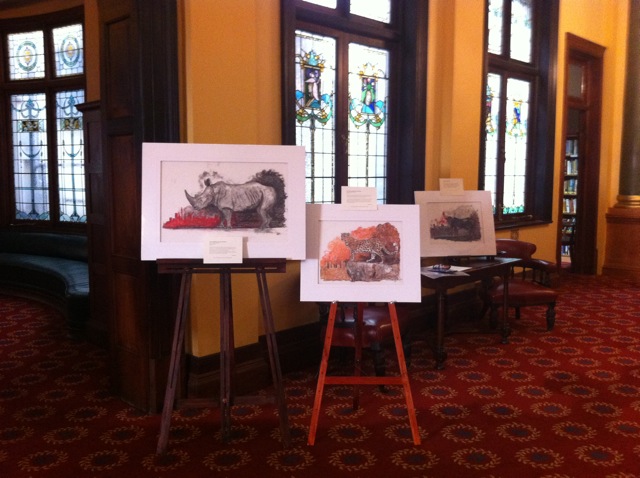This month, the Rand Club turns 125 years old. Tomorrow, October 6, it hosts an open day from 12 noon until 5pm. If you live in Joburg, and you’ve always wondered what goes on behind that grand facade, this is the perfect opportunity to step through those doors into a different world.

Until July this year, I had never visited the Rand Club. To tell the truth, I had no idea what it actually looked like, or where it was. All I knew was that it was the byword for capitalist power of a rather traditional kind; the moneyed elite who’d shaped Johannesburg’s history as a financial centre and who assiduously enforced a certain status quo. I imagined a door in a wall through which only a selected few were allowed, but beyond that, I could picture nothing.
How familiar it seems to me now. The entrance doors, the grand central staircase, the dining room with its delicate blues; the library and the billiards room filled with trophies of long dead kudu bulls, even the ladies’ loos with their Audubon prints.
And if you’d said to me at the beginning of this year that I’d be exhibiting my art in the Rand Club of all places, in an exhibition inspired by Rudyard Kipling of all figures, I would have been somewhat surprised. The Rand Club is closed, elitist, stuffy, I would have said. No ways they’d take a risk with my work, which though it is about Johannesburg, is also in an unusual and decidedly unconventional medium, not the sort of thing that conservative old men would approve of.
But that was before I met the new general manager, Charles Drewe, and asked — in a move that was uncharacteristically cheeky for me — whether he’d consider exhibiting art. He told me about the 125th anniversary and the Kipling dinners, and that’s what inspired the exhibition in the club along with images from The Star’s Barnett Collection.

My work on display outside the dining room
To exhibit one’s work in such a beautiful and historic space is a rare privilege. The Rand Club is saturated with our fraught, messy and always intriguing history. I made a point of positioning my painting of If next to a small statue of Cecil John Rhodes in the entrance hall. It features the text of the poem that has probably inspired more schoolboys than any other — one of the reasons I hated it growing up, though that’s a story for another time — juxtaposed with the most iconic structure in Johannesburg, one which is surrounded by thousands of descendants of the very people that Rhodes dismissed as “cheap slave labour”. I quite like the irony in that. History always comes back to haunt you.

That the club agreed to let me exhibit paintings of this hard, concrete city in a soft, feminine and completely unconventional medium, is evidence of just how much it has changed. Contrary to an assumption I have frequently encountered, women are members now (and have been since the mid-1990s), and the club has changed in tune with the wider society in which it finds itself. Now @TheRandClub is tweeting even as it holds on to its history and opens its doors to the public.
As part of the exhibition, Charles asked me to donate a specially commissioned painting to be raffled. Something of an experiment, I combined a photograph with lipstick and text. In the paint, I wrote: “This place stands firm in the swirling currents of history”. The club has survived war, riots, unrest and a fire. It has witnessed the passage of 125 turbulent years, during which society has changed beyond all recognition.
Now’s your chance to catch a glimpse of the world behind those doors.


